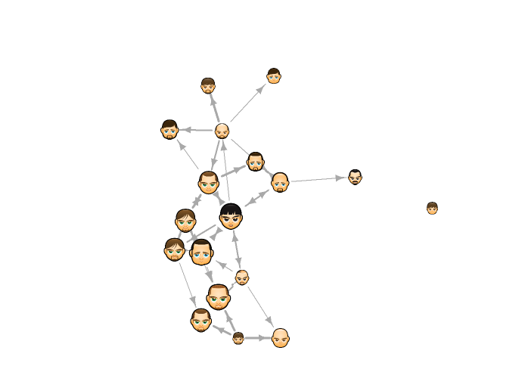7. The study of the team structure using social network analysis
Analyzing the characteristics and structure of the teams is an important aspect in order to reveal the potential problems, intervention points, or development possibilities. Social network analysis may serve as such a tool in studying teams from a psychological perspective.
(Social) network analysis is an old method that has gained momentum in the last two decades, and became an increasingly popular method, that is by now considered as a separate field of science (Barabási, 2017).
The basic concept of network analysis is rather simple. (This short outline of network analysis is based on Münnich and Hidegkuti (2013).) The basic “building blocks” of a network are the actors (persons, schools, computers, countries, etc., depending on the network in question) usually called nodes. The connections between the nodes are called edges that can be directed or undirected. The nodes and edges make up a graph which is a representation of the network. Network analysis is fundamentally a data mining method, of which an important and most characteristic tool is the visual representation of the nodes and their connections. Beyond that of course there are coefficients and indices serve the goal of characterizing networks and the connections between the actors.
One of the most important constructs used in network analysis is the centrality of the actors. Numerous such centrality measures have been constructed and proposed in the literature, of which one of the most important, most widely used and probably most easily grasped is the so-called degree centrality which expresses the number of connections an actor has with other actors. This can be further elaborated if the directions of the connections is taken into account in case of directed graphs. The number of connections is an obvious measure to express the central role an actor plays, but alone it is not necessarily appropriate to express the different aspects of centrality. Closeness centrality expresses how close is an actor to the other actors “on average”, that is, how easily he/she can reach the other actors. Betweenness centrality, on the other hand, shows how much an actor is on the paths between pairs of the other actors, that is, how much the relation of two arbitrary actors involve the actor in question. In Figure 4. the network based on sympathy choices of a handball team is depicted. The size of the fictive pictures is proportionate with the degree centrality of the given actor, expressing how central the actor is. The width of the lines representing the connections between the actors expresses the number of questions in which one actor chose the other.

Figure 4: Network graph of an adult handball team based on three sympathy questions.